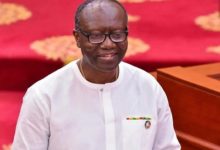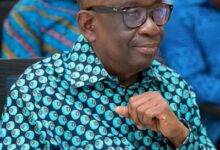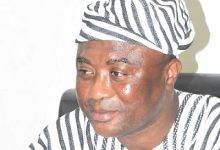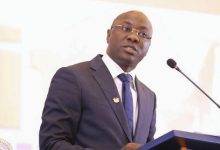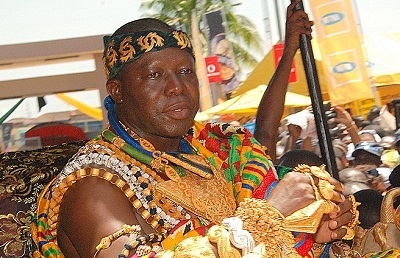
In the beginning, God created the heavens and the earth, according to the good old book, The Bible, and employed man to have dominion over everything “And God blessed them. And God said to them, “Be fruitful and multiply and fill the earth and subdue it and have dominion over the fish of the sea and over the birds of the heavens and over every living thing that moves on the earth.” Genesis 1:28
God the Father who created and owns the whole of the universe including the His children has the whole of the universe and His Kingdom as an inheritance for us to keep. From the beginning of live he apportioned sections for selected people to rule.
He created domains all-over for people to dwell and each of these domains ought to have leaders call kings. In the beginning of time, He was the immortal King of His people but at a point He yielded to the persistent request of man to have a mortal king.
Kingdom is formed of two English words, ‘King and Domain’. In fact every king has where he rules, a territory if you like. The territory is what is referred to as domain. So it becomes king and domain – kingdom. The king’s domain is his kingdom.
The entire world and Ghanaians in particular are cerebrating the king of the Asante domain – the Asante kingdom. On April 26, 1999, when I was the first Ashanti Regional Correspondent for Ghana’s first free-on-air television, TV3 Network Limited, the then Barima Kwaku Duah, who at the time was 49 years old, was enstooled at a colourful and extremely rich cultural event as the 16th king of the Asante kingdom.
He was traditionally named after one of the powerful and wise kings of the kingdom, Osei Tutu 1 who is believed to have founded the modem Asante kingdom. Hence his stool name Otumfuo Osei Tutu II. He is 20 years on the Golden Stool, this month of April.
The Golden Stool known otherwise as the “Sika Dwa Kofi” in the local dialect is the royal and God-given throne of the good people of the Asante. It is also deemed as the very definitive symbol of power and unity among this powerful people.
It is also widely believed that this stool descended from the sky and landed on the lap of the first Asante king, Otumfour Osei Tutu 1. Above all, it was and still the symbol of extraordinarily traditional leadership emblem for the Asante Kingdom of this country. That was said to be the beginning of a powerful kingdom warring to conquer several territories and the continuation now with the second Osei Tutu is to fight wars against commotion, poverty, illiteracy, injustice and underdevelopment.
Few months into his enstoolement I had the prevelage of meeting him one-on-one, at his private residence, courtesy, the then Chief Executive of Kumasi Asante Kotoko Football Club, Mr Herbert Mensah. The informal chat we had and the words of wisdom I heard were a clear indication of a very good and positive omen for the good people of his kingdom and Ghana in general.
Within weeks he laid out plans to bring a dramatic change within what he had inherited. His popular saying, “in the olden days, kings led their people for war but today, we have to lead the people for development” became so much popular and well acclaimed. The response from the people including those outside his kingdom was the showering on him the accolade “King Solomon”
Sooner than later, the entire nation witnessed the establishment of famous Otumfuo Educational Fund to provide assistance and support, to brilliant but needy school pupils and students. Today over 20 thousand students at all levels of education from around the country have benefitted from this enviable package, which has helped in changing the lives of many people in Ghana especially in the rural Ghana.
New school buildings have been built while a number of old and dilapidated ones have ben rehabilitated. Some schools in Ghana have received huge learning and teaching aids under the fund with teachers being encouraged and motivated through the provision of basic needs and teacher award scheme.
As the Chancellor of the Kumasi based university, The Kwame Nkrumah University of Science and Technology, for the past 13 years, he has helped in developing infrastructure and facilities as well as human resources for the enhancement of teaching, learning and training,
For him “it was an opportunity to serve, and indeed, have nurtured, molded the KNUST to be one of the best science and technology learning institutions in Ghana and a world class one.”
In the health sector Otumfuo Osei Tutu 11 has instituted the a Health Fund to pursue a basic health care plan to finance the reduction of maternal and infant mortality, glaucoma and other eye diseases.
The Serwaa Ampem AIDs Foundation for children under the leadership of his wife, Lady Julia Osei Tutu to help children who have become victims of the HIV/AIDs pandemic is also commendable.
Residential quarters for nurses and other paramedical staff have been provided and general health campaign in co-operation with the state agencies has been stepped up in the rural areas.
Otumfour Osei Tutu 11 has blended wisdom, education, knowledge and tradition to reshape the focus of chieftaincy not only in Ghana but also around the globe. For the fist time in the history of Ghana, the king of the Asante kingdom, led a eminent chiefs from Ghana to parade the rich culture of the nation and the Ashanti’s in particular and also engaged business groups in London in the United Kingdom and Atlanta in the United States in the year 2003 at the first ever trade and investment fair on Ghana outside Ghana in these two powerful as well as business and economic hubs.
Many traditional and political leaders have engaged him to tap his tactics and strategy of the effective and forward-looking leadership.
His lecture at the at Boston’s Museum of Fine Arts (MFA) as the guest of honour at the MFA and Harvard University’s W.E.B. Du Bois Institute for African and African-American Studies, USA, for example, was one that hugely projected the Ghanaian chieftaincy institution and its shift in old concepts as well as exhibiting the incredible African values.
To the whole world the king who has positioned himself emphatically, to “fight for development and peace” delivered and exceptionally brilliant lecture on “Chieftaincy and Development in contemporary Africa: The Case of Asante” to the admiration of his audience who very long standing ovation and the extoled applause said it all.
For him. “The need for this international respectability and good image of Africa’s progress today has come about because ever since Africa’s encountered with the colonialists in the 18th century, the continent has suffered painful bad image abroad and has been described in all sorts despicable ways – “primitive,” “basket case,” among others – by people who did not know and understand Africa and this situation has not helped in her progress.” Hence his commitment to lead the campaign with his position to bring about new thinking about Africa.
This was not the only platforms he had used to explore means of getting befitting place in the global scene for Africa and Ghana, for that matter, at the Chatham House in London among many other places he has made his intensions and desires well known. That is to ensure peace, unity and development for the good of his country and continent.
Hail The King – Otumfour Osei Tutu 11 (Part 11)
In the early years of his reign he met President Muammar Al Gadhafi of Libya who was paying a visit to Ghana by road. This was at his palace in Kumasi, His engagements with other world leaders such as the Queen of Great Britain, Elizabeth 11, former President of the World Bank, Mr James D. Wolfensohn, former President of South Africa, Mr Nelson Mandela, and President Thabo Mbeki also of South Africa were used to foster relationships.
He has also put his case across to Queen Beatrix of Holland, President of Sierra Leone, Alhaji Tejan Kabbah other include the President of Ethiopia, the Archbishop of Canterbury, King Mohammed VI of Morocco, and President Horst Kholer of Germany among many others on the wellbeing of Africa and Ghana for that matter.
He has over the years called on other traditional leaders on the African continent “to assert themselves and play meaningful roles by mobilising the people in their respective communities for rapid socio-economic development. This is in the right direction because it is believed that traditional leaders on the continent of Africa have a huge role in helping to ensure the holistic development of the people.
“African traditional leaders needed to build confidence in themselves and present a united front in the preservation of their status and the protection of their values and cultural heritage.” The 69 year old “has established a solid foundation for co-operation between tradition and modernism, by emphasizing the need for tradition to redefine itself in a rapidly changing world without losing its essence.”
Evidently, the past 12 years or so has seen him ably strategising with some other eminent traditional leaders to working extremely hard in bring to an end a 17-year-old Dagbon chieftaincy dispute resulting in the ensuring leadership for the people with the enskinment of a new Ya-Na.
These and many other initiatives to ensure peace within commotion circles among politicians, religious leaders, and even for his own sub chiefs are there for all to see. Otumfuo Osei Tutu II has brought peace and reconciliation to his kingdom by settling over five hundred chieftaincy and land disputes.
One intriguing initiative towards peace in Ghana that the king had diplomatically and successfully perused over the years is about what he revealed recently that “from the days of Jerry Rawlings —John Kufuor to present day John Mahama — Nana Addo Dankwa Akufo-Addo, he had mediated behind closed doors sometimes on the eve of elections just for Ghana to have peace.”
The king has revealed that he is the reason why Ghana has enjoyed peace after every general election for the past 27 years adding that his interventions have tremendously helped to defuse severe tensions between opposing political party leaders after general elections in the country.
This is an issue hailed by both the very first President of the fourth republic and the very latest, Jerry John Rawlings and Nana Addo Dankwa Akufo-Addo respectively. President Akufo-Addo has described the king of the Asante kingdom “as a pillar of peace and development in the country. According to him, the Asante Monarch has played a pivotal role in Ghana’s development and peace since his assumption as the King of the Asante Kingdom’ while Flt Lt (Rtd) Rawlings’ admiration recounts “Otumfuo’s rule over Asanteman with wisdom and fortitude, which has brought greater glory to undoubtedly one of Africa’s, leading Kingdoms.”
One of the monumental initiates was his first to Kyebi, the capital of the people of the Akyem Abuakwas at the special invitation by the Okyehene, Amoatia Ofori Panin 11 as the special guest of honour at the 75th anniversary of celebration of the death of the chief of Akyem Abuakwa Traditional Area, Nana Sir Ofori Atta 1,
Importantly it did not only shamed critics but also refuted the seemingly tension and rivalry between the two peoples who crucially have many things in common.
At the durbar to climax the three-month long cerebrations, Otumfour announced a similar visit by the Okyehene on the next Akwasidai. This outstanding show of brotherliness between the two brings to the fore the importance of education, social intimacy, mutual understanding and positive aspiration by traditional and other leaders of this country.
His quest for social-economic development has been so paramount hence his exemplary determination to set up the Asanteman Economic Revitalisation Plan, which has the objective of promoting private and corporate investment in Local Industries, re-afforestation, and irrigation, programmes. In addition, he has his own initiative, a pilot project to encourage and motivate on “Promoting Partnerships with Traditional Authorities Project” (PPTAP).
The main purpose of the PPTAP is to assist and support the substantively integrate and improve deprived remote and rural communities’’ involvement in development activities and also help focus the contribution and influence of traditional authorities in socio-economic development in their areas.
By this he has thrown a huge challenge to his Traditional Leaders to demonstrate their capacity to use their own resources in response to financial support made available by the Government or the World Bank to help develop their communities as per part of the objectives of the project.
It is therefore fascinating to note that during the cerebration of his 20 years on the prominent golden stool, the progressive occupant has launched a $400 million development fund to implement a 10-year development plan for his kingdom.
Recently the king has initiated a 10-year development drive expected to cost $400 million to transform Kumasi into a modern industrial city. The primary objective is to help create about 3,000 direct and 2,000 indirect jobs for the youth in the country. Among other things, there will be a construction of a jute-processing factory at Sabin Akrofuom (Nkoranza) to promote cocoa, cashew nut and other related crops to grow the local economy.
Undoubtedly, Asanteman has seen so much transformation in all aspect of human life in the past 20 years than any other period. The physical structure edifice of the seat of the king, Manhyia palace is so befitting and can be compared to any renowned monastery edifice in the world, thanks to the extraordinary vision and the willpower of the 16th occupant of the golden stool.
Chieftaincy in the country, today has been so prestigious and respected with many educated and well-placed professionals entering primarily due to the path some leaders like Otumfour Osei Tutu have paved.
Definitely not exhibiting any signs of satisfaction, accomplishment, or complacency, he still believes there is more to be done than what has been achieved. He therefore subjects himself to his subjects for assessment of the 20 years rule. The king does not see himself as lording over the people but rather a practical leader who wishes his people well in all aspect of their lives, thus requesting for a genuine assessment of his stewardship over the 20-year period.
Otumfuo Osei Tutu II is a great Leader of Asanteman, leading in the preservation of cultural heritage as well as combining modernism and tradition to promote education, health, and economic development of his people.”
He has ultimately and holistically changed the old face of chieftaincy, which was to rule and lord over to a new dimension of chieftaincy, which is peace and development.
By Nana Sifa Twum

